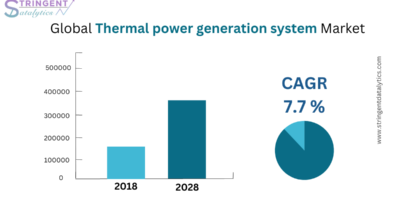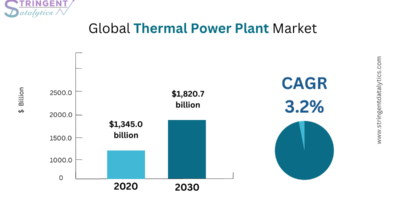The IDO Inhibitors Market refers to the segment of the pharmaceutical industry focused on the development and commercialization of drugs that inhibit the enzyme indoleamine 2,3-dioxygenase (IDO). IDO is an immunosuppressive enzyme that plays a critical role in tumor immune evasion by degrading tryptophan into kynurenine, which suppresses T-cell activation and promotes regulatory T-cell (Treg) activity, allowing cancer cells to escape immune detection. By inhibiting IDO, these drugs aim to restore the immune system’s ability to recognize and destroy cancer cells, making them a promising area of research in cancer immunotherapy. The market is still in its early stages, driven by clinical trials and research into combining IDO inhibitors with other immunotherapeutic approaches, such as checkpoint inhibitors.
Key Components and Market Drivers:
- Types of IDO Inhibitors:
- Epacadostat (INCB024360): One of the most well-known IDO inhibitors, developed by Incyte Corporation, it has been explored in combination with PD-1 inhibitors like pembrolizumab (Keytruda) in various cancers, including melanoma and lung cancer. However, a notable phase III trial failed to show the expected benefits in combination therapy for melanoma, which led to a reassessment of IDO’s role in cancer therapy.
- Navoximod (GDC-0919): Developed by Roche/Genentech, this IDO inhibitor has been evaluated in clinical trials for solid tumors, either as monotherapy or in combination with other immune checkpoint inhibitors like atezolizumab (Tecentriq).
- Indoximod: Another IDO pathway inhibitor, developed by NewLink Genetics, works by reversing the immunosuppressive effects of IDO indirectly. Unlike direct IDO inhibitors like epacadostat, indoximod affects the signaling pathways impacted by IDO activity.
- Market Drivers:
- Growing Focus on Immuno-Oncology Therapies: The IDO inhibitors market is driven by the overall growth of cancer immunotherapy, a field that focuses on using the body’s immune system to fight cancer. The increasing use of checkpoint inhibitors such as PD-1/PD-L1 inhibitors and the potential to improve their efficacy with combination therapies, including IDO inhibitors, has spurred interest in this market.
- Expanding Research in Combination Therapies: One of the key strategies in cancer treatment is combining IDO inhibitors with other types of immunotherapies, such as checkpoint inhibitors (PD-1, PD-L1 inhibitors), or traditional cancer treatments like chemotherapy. The rationale is that IDO inhibitors can potentially enhance the immune response when paired with these therapies.
- Increased Funding for Cancer Research: Significant investment in cancer research and the discovery of new therapeutic pathways is bolstering the IDO inhibitors market. Governments, research institutions, and pharmaceutical companies are increasingly investing in oncology research, contributing to the development of new therapeutic approaches, including IDO inhibitors.
- Advancements in Understanding the Tumor Microenvironment: The growing knowledge of the tumor microenvironment and how it influences cancer progression is leading to the identification of new therapeutic targets like IDO. As the understanding of tumor biology deepens, IDO inhibitors are becoming an integral part of research focusing on overcoming immune resistance in tumors.
- Challenges and Competitive Landscape:
- Clinical Setbacks: Despite initial optimism, some trials have shown disappointing results. For example, Incyte’s phase III trial of epacadostat in combination with pembrolizumab for advanced melanoma did not meet its primary endpoint, leading to a re-evaluation of IDO inhibitors in immunotherapy. This has slowed the momentum in the market and raised questions about the effectiveness of IDO inhibition as a standalone strategy in cancer treatment.
- Key Players: Apart from Incyte, Roche/Genentech, and NewLink Genetics, several other companies are exploring IDO inhibition in cancer therapy. These include Pfizer, which has investigated IDO inhibitors in combination with other drugs, and AstraZeneca, which has incorporated IDO inhibitors into its oncology pipeline.
- Shift Toward Novel Combinations: With the challenges faced in recent trials, the market is now shifting toward exploring IDO inhibitors as part of multi-pronged approaches, combining them not only with PD-1/PD-L1 inhibitors but also with other emerging immunotherapies and targeted treatments.
- Emerging Alternatives and Competition: With the rise of new immune checkpoint inhibitors, adoptive T-cell therapies, and novel cancer vaccines, IDO inhibitors face competition from other advanced immunotherapeutic strategies. The success of these newer modalities could potentially limit the demand for IDO inhibitors unless their efficacy can be definitively proven in combination regimens.
Conclusion:
The IDO Inhibitors Market remains a promising but challenging area within cancer immunotherapy. While early clinical results were disappointing, the potential of IDO inhibitors as part of combination therapies keeps interest alive in ongoing research. Future growth will depend on how well these inhibitors can be integrated with other therapies and whether upcoming trials can demonstrate clear benefits. As research into the tumor microenvironment and immunotherapy continues to evolve, IDO inhibitors may find their niche within the broader oncology market, particularly if their role in combination therapies is solidified through successful clinical outcomes.
The IDO Inhibitors Market refers to the segment of the pharmaceutical industry focused on the development and commercialization of drugs that inhibit the enzyme indoleamine 2,3-dioxygenase (IDO). IDO is an immunosuppressive enzyme that plays a critical role in tumor immune evasion by degrading tryptophan into kynurenine, which suppresses T-cell activation and promotes regulatory T-cell (Treg) activity, allowing cancer cells to escape immune detection. By inhibiting IDO, these drugs aim to restore the immune system’s ability to recognize and destroy cancer cells, making them a promising area of research in cancer immunotherapy. The market is still in its early stages, driven by clinical trials and research into combining IDO inhibitors with other immunotherapeutic approaches, such as checkpoint inhibitors.
Key Components and Market Drivers:
- Types of IDO Inhibitors:
- Epacadostat (INCB024360): One of the most well-known IDO inhibitors, developed by Incyte Corporation, it has been explored in combination with PD-1 inhibitors like pembrolizumab (Keytruda) in various cancers, including melanoma and lung cancer. However, a notable phase III trial failed to show the expected benefits in combination therapy for melanoma, which led to a reassessment of IDO’s role in cancer therapy.
- Navoximod (GDC-0919): Developed by Roche/Genentech, this IDO inhibitor has been evaluated in clinical trials for solid tumors, either as monotherapy or in combination with other immune checkpoint inhibitors like atezolizumab (Tecentriq).
- Indoximod: Another IDO pathway inhibitor, developed by NewLink Genetics, works by reversing the immunosuppressive effects of IDO indirectly. Unlike direct IDO inhibitors like epacadostat, indoximod affects the signaling pathways impacted by IDO activity.
- Market Drivers:
- Growing Focus on Immuno-Oncology Therapies: The IDO inhibitors market is driven by the overall growth of cancer immunotherapy, a field that focuses on using the body’s immune system to fight cancer. The increasing use of checkpoint inhibitors such as PD-1/PD-L1 inhibitors and the potential to improve their efficacy with combination therapies, including IDO inhibitors, has spurred interest in this market.
- Expanding Research in Combination Therapies: One of the key strategies in cancer treatment is combining IDO inhibitors with other types of immunotherapies, such as checkpoint inhibitors (PD-1, PD-L1 inhibitors), or traditional cancer treatments like chemotherapy. The rationale is that IDO inhibitors can potentially enhance the immune response when paired with these therapies.
- Increased Funding for Cancer Research: Significant investment in cancer research and the discovery of new therapeutic pathways is bolstering the IDO inhibitors market. Governments, research institutions, and pharmaceutical companies are increasingly investing in oncology research, contributing to the development of new therapeutic approaches, including IDO inhibitors.
- Advancements in Understanding the Tumor Microenvironment: The growing knowledge of the tumor microenvironment and how it influences cancer progression is leading to the identification of new therapeutic targets like IDO. As the understanding of tumor biology deepens, IDO inhibitors are becoming an integral part of research focusing on overcoming immune resistance in tumors.
- Challenges and Competitive Landscape:
- Clinical Setbacks: Despite initial optimism, some trials have shown disappointing results. For example, Incyte’s phase III trial of epacadostat in combination with pembrolizumab for advanced melanoma did not meet its primary endpoint, leading to a re-evaluation of IDO inhibitors in immunotherapy. This has slowed the momentum in the market and raised questions about the effectiveness of IDO inhibition as a standalone strategy in cancer treatment.
- Key Players: Apart from Incyte, Roche/Genentech, and NewLink Genetics, several other companies are exploring IDO inhibition in cancer therapy. These include Pfizer, which has investigated IDO inhibitors in combination with other drugs, and AstraZeneca, which has incorporated IDO inhibitors into its oncology pipeline.
- Shift Toward Novel Combinations: With the challenges faced in recent trials, the market is now shifting toward exploring IDO inhibitors as part of multi-pronged approaches, combining them not only with PD-1/PD-L1 inhibitors but also with other emerging immunotherapies and targeted treatments.
- Emerging Alternatives and Competition: With the rise of new immune checkpoint inhibitors, adoptive T-cell therapies, and novel cancer vaccines, IDO inhibitors face competition from other advanced immunotherapeutic strategies. The success of these newer modalities could potentially limit the demand for IDO inhibitors unless their efficacy can be definitively proven in combination regimens.
Conclusion:
The IDO Inhibitors Market remains a promising but challenging area within cancer immunotherapy. While early clinical results were disappointing, the potential of IDO inhibitors as part of combination therapies keeps interest alive in ongoing research. Future growth will depend on how well these inhibitors can be integrated with other therapies and whether upcoming trials can demonstrate clear benefits. As research into the tumor microenvironment and immunotherapy continues to evolve, IDO inhibitors may find their niche within the broader oncology market, particularly if their role in combination therapies is solidified through successful clinical outcomes.
Click Here, To Get Free Sample Report https://stringentdatalytics.com/sample-request/ido-inhibitors-market/14279/
Market Segmentations:
Global IDO Inhibitors Market: By Company
Pfizer
Bristol-Myers Squibb
Kyowa Hakko Kirin
Global IDO Inhibitors Market: By Type
Dual IDO1/TDO inhibitors
Covalent IDO inhibitors
Global IDO Inhibitors Market: By Application
Metastatic Melanoma
Metastatic Pancreatic Cancer
mCRPC
Malignant Glioma
Astrocytoma
Breast Cancer
Global IDO Inhibitors Market: Regional Analysis
The regional analysis of the global IDO Inhibitors market provides insights into the market’s performance across different regions of the world. The analysis is based on recent and future trends and includes market forecast for the prediction period. The countries covered in the regional analysis of the IDO Inhibitors market report are as follows:
North America: The North America region includes the U.S., Canada, and Mexico. The U.S. is the largest market for Cold-chain Pharma in this region, followed by Canada and Mexico. The market growth in this region is primarily driven by the presence of key market players and the increasing demand for the product.
Europe: The Europe region includes Germany, France, U.K., Russia, Italy, Spain, Turkey, Netherlands, Switzerland, Belgium, and Rest of Europe. Germany is the largest market for Cold-chain Pharma in this region, followed by the U.K. and France. The market growth in this region is driven by the increasing demand for the product in the automotive and aerospace sectors.
Asia-Pacific: The Asia-Pacific region includes Singapore, Malaysia, Australia, Thailand, Indonesia, Philippines, China, Japan, India, South Korea, and Rest of Asia-Pacific. China is the largest market for Cold-chain Pharma in this region, followed by Japan and India. The market growth in this region is driven by the increasing adoption of the product in various end-use industries, such as automotive, aerospace, and construction.
Middle East and Africa: The Middle East and Africa region includes Saudi Arabia, U.A.E, South Africa, Egypt, Israel, and Rest of Middle East and Africa. The market growth in this region is driven by the increasing demand for the product in the aerospace and defense sectors.
South America: The South America region includes Argentina, Brazil, and Rest of South America. Brazil is the largest market for Cold-chain Pharma in this region, followed by Argentina. The market growth in this region is primarily driven by the increasing demand for the product in the automotive sector.
Click Here, To Buy Premium Report https://stringentdatalytics.com/purchase/ido-inhibitors-market/14279/?license=single
Reasons to Purchase this Market Report:
- The competitive environment includes the proportions of important players, recent innovations, and strategy.
- Companies with extensive product offerings, pertinent financial data, recent advancements, SWOT analyses, and player tactics.
- Quantitative, qualitative, value (in USD million), and volume (in units million) data are among the segments and sub-segments.
- The research contains a wealth of data, including market dynamics and opportunities throughout the forecast period.
- Data at the regional, sub-regional, and national levels also provides information on the market’s supply and demand dynamics.
About Stringent Datalytics
Stringent Datalytics offers both custom and syndicated market research reports. Custom market research reports are tailored to a specific client’s needs and requirements. These reports provide unique insights into a particular industry or market segment and can help businesses make informed decisions about their strategies and operations.
Syndicated market research reports, on the other hand, are pre-existing reports that are available for purchase by multiple clients. These reports are often produced on a regular basis, such as annually or quarterly, and cover a broad range of industries and market segments. Syndicated reports provide clients with insights into industry trends, market sizes, and competitive landscapes. By offering both custom and syndicated reports, Stringent Datalytics can provide clients with a range of market research solutions that can be customized to their specific needs.
Contact Us
Stringent Datalytics
Contact No- +1 346 666 6655
Email Id- sales@stringentdatalytics.com




Leave a Reply